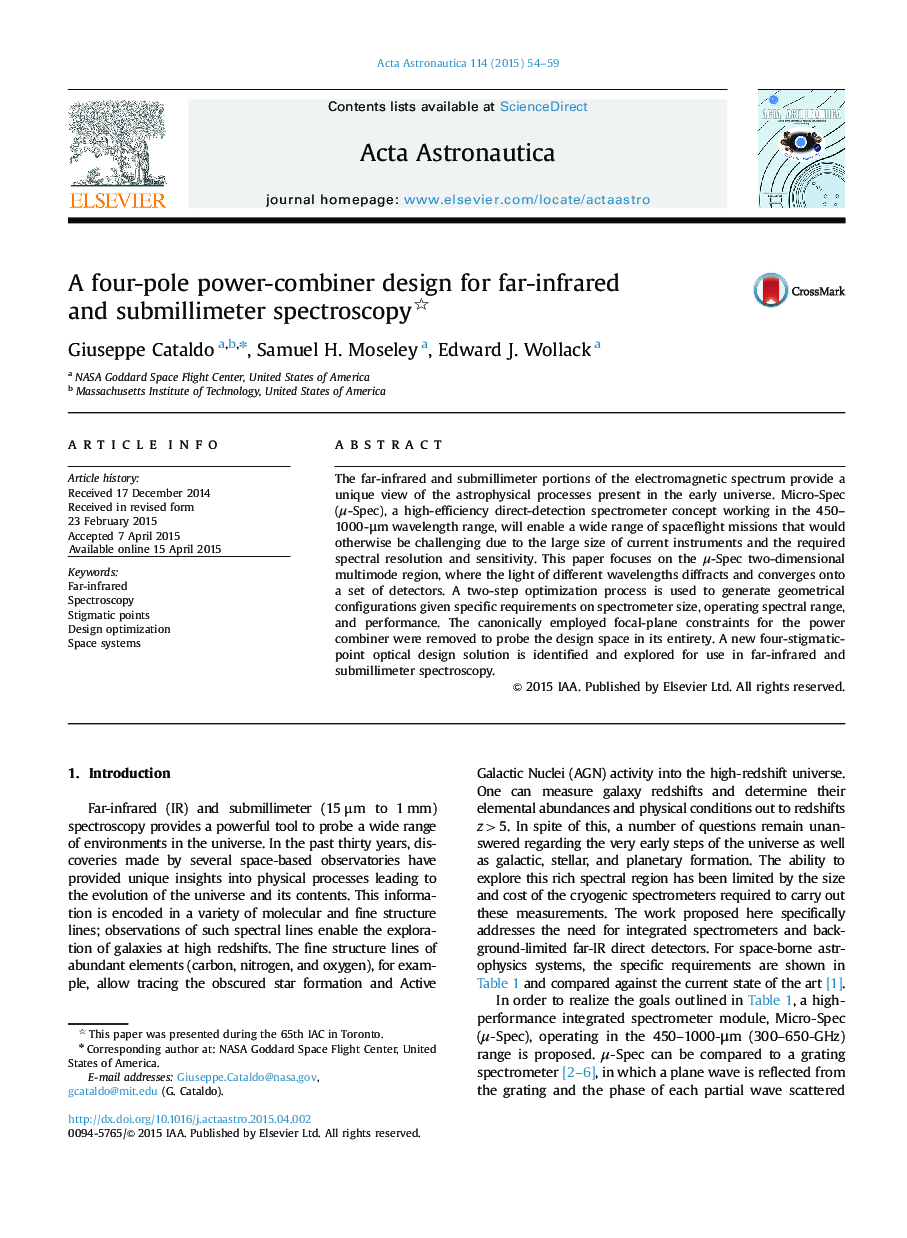| Article ID | Journal | Published Year | Pages | File Type |
|---|---|---|---|---|
| 8056488 | Acta Astronautica | 2015 | 6 Pages |
Abstract
The far-infrared and submillimeter portions of the electromagnetic spectrum provide a unique view of the astrophysical processes present in the early universe. Micro-Spec (μ-Spec), a high-efficiency direct-detection spectrometer concept working in the 450-1000-μm wavelength range, will enable a wide range of spaceflight missions that would otherwise be challenging due to the large size of current instruments and the required spectral resolution and sensitivity. This paper focuses on the μ-Spec two-dimensional multimode region, where the light of different wavelengths diffracts and converges onto a set of detectors. A two-step optimization process is used to generate geometrical configurations given specific requirements on spectrometer size, operating spectral range, and performance. The canonically employed focal-plane constraints for the power combiner were removed to probe the design space in its entirety. A new four-stigmatic-point optical design solution is identified and explored for use in far-infrared and submillimeter spectroscopy.
Related Topics
Physical Sciences and Engineering
Engineering
Aerospace Engineering
Authors
Giuseppe Cataldo, Samuel H. Moseley, Edward J. Wollack,
